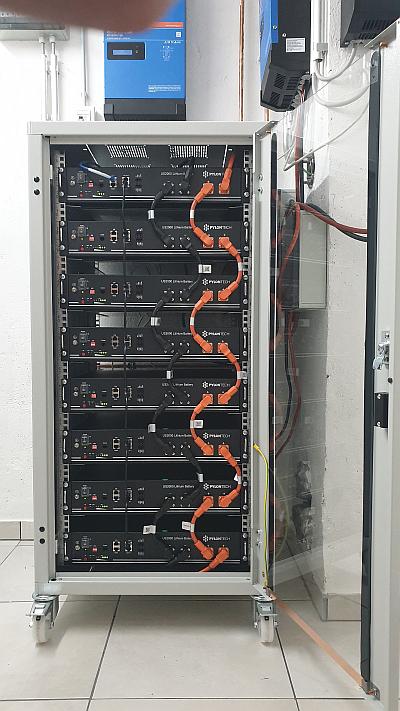Hello Victron universum, hello Pylontech Users!
I run an ESS system with 8 connected Pylontech US2000B+ for more than six weeks and it works very perfect from the beginning with the parameters Victron recommend.

I read a lot of threads connected in Pylontech batteries questions, facts and ideas. I still have many questions and things I don't understand and I try to puzzle it out. I think it might be helpfully for the community if interested Pylontech users share and collect their knowledge and their experience here in a thread.
Many of the questions here in the forum are directed to how many units should be used as minimum? There are two documents from victron which gives guideline for this:
By observing my logfile I found one fact interesting for the question how many units are necessary, too: CCL - Charge Current Limit I never have seen be addressed here and it might be important in understanding how many units would be useful as minimum set. As running a set with eight units this parameter CCL is normally set by the Pylontech BMS to 8 x 25 A to 200 A current in my installation.

I found regularly, almost every day, when the batteries are around a SOC level 88%, 89% that following combination of three facts occur in a very, very small gap of time:
- During charging the battery, increasing temperature, quite normal I think, but it has the highest value of all the day, a peak of 1°C higher as rest of the day for a small time period starting in this moment
- DC voltage suddenly goes higher than 51.0 V. As having only a little know-how about charging batteries I don't understand why? Might be based when changing from bulk -> absorption?
- Charge current goes down from 60 A, 80 A, 90 A at this moment to low current some as: 4 A, 2 A or 0 A
In this moment the Pylontech BMS reduces the CCL from 200 A to 80 A limit. I guess it is per unit 10 A. This limit is than over many hours until night valid. I think this is triggered with one of the above three facts or might be a combination of two or all three facts. So in case batteries are later discharged again at this day e.g. -10% SOC and some later charged again, there will be a limitation for charging current and not all available PV energy can be used for charging.
I am wondering what would happen when I increase the number from eight to 10 units, will be this CCL regulation to 100 A as instead to 80 A? Or for people who think to work with a smaller number of batteries e.g. 6 units it will be down to 60 A?
What I want to learn about:
- Are there other users who made the same or similar notice when looking to the CCL limit during charging process?
- My batteries are down in cellar in a cool room. But I am sure in high summer temperature will increase some °C.
- Will higher temperature have a direct influence to the described CCL limitation?
- Earlier in time?
- And perhaps higher temperature will have a limit lower than 10 A per unit?
- How much self cooling is necessary and helpfully for CCL limit?
- Distance between the Pylontech units?
- Number of units in closed housing?
- How and where did you install your Pylontech batteries? I use a server cabinet which is quite good ventilated, very stable and can be easily moved because it is on rolls. And as having view space in my solar room this is somehow useful for me.
and last but not least
- I want to understand the parameters setup in VE-Config:
- It is mentioned there the absorbtion voltage of 52.0 V and I found a recommendation in a discussion here to set it to 51.6V - I would be happy to understand why 52.0 or 51.6 V?
- What happens technically during the absorbtion phase, I would be interested to understand in detail?
As I have still some space in my server cabinet for two additional US2000B+ and as for 10 units it is necessary to use a LV-HUB and divide the 10 units in to two stack, each withfive units.
- I would be interested if there is somebody out who have already used in a installation this LV-HUB and does it work and can be setup as simply as without the LV-HUB?
I am looking forward to get your feedback, hints, recommendation and all interesting facts around Pylontech batteries.
DayAndNight
